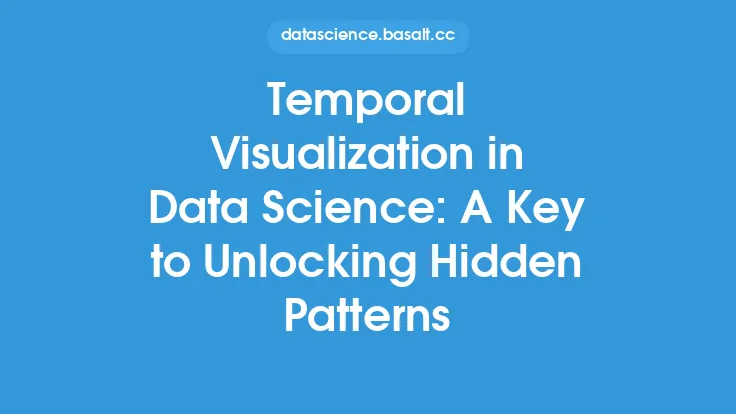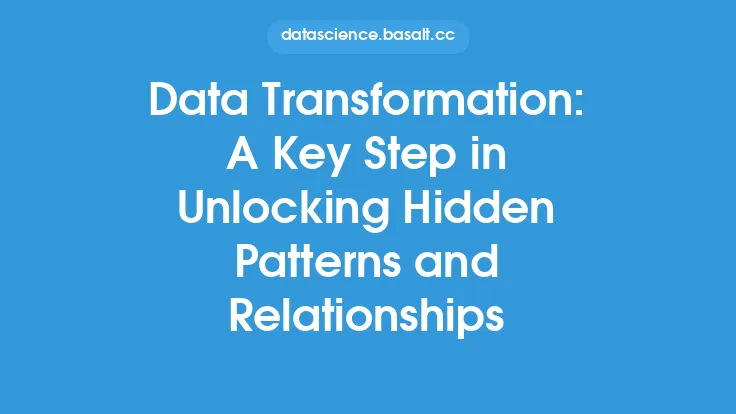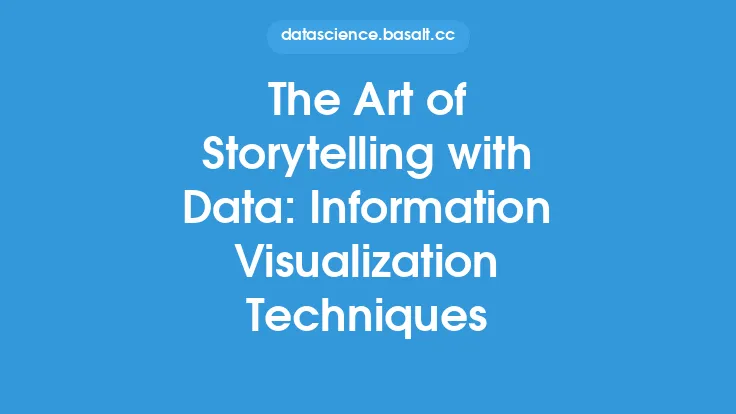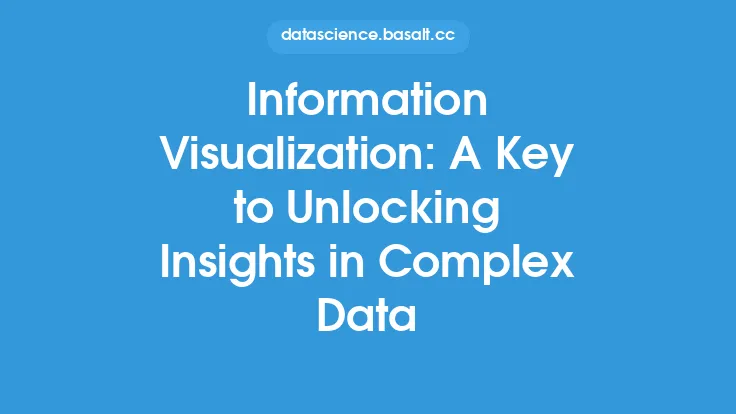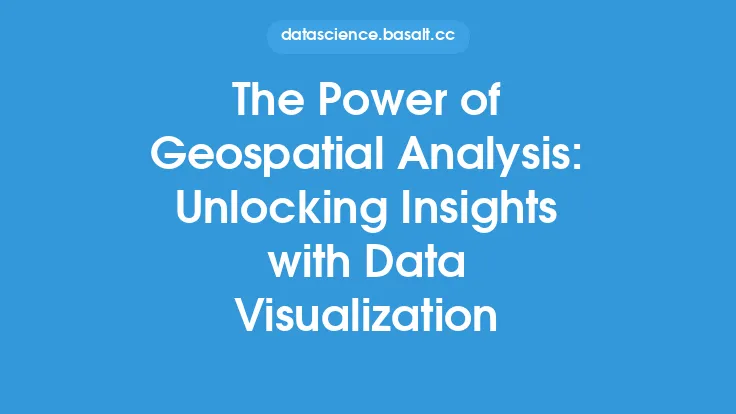Information visualization is a crucial aspect of data visualization that involves the use of visual representations to communicate information and data insights. It is a powerful tool that enables users to identify patterns, trends, and correlations within complex data sets, and to gain a deeper understanding of the underlying information. At its core, information visualization is about presenting data in a way that is easy to understand and interpret, and that facilitates the discovery of new insights and knowledge.
Introduction to Information Visualization
Information visualization is a multidisciplinary field that draws on techniques and methods from computer science, statistics, design, and cognitive psychology. It involves the use of a range of visualizations, including charts, graphs, maps, and other graphical representations, to display data in a way that is intuitive and engaging. The goal of information visualization is to enable users to explore and understand complex data sets, and to identify patterns and trends that may not be immediately apparent from the raw data.
Types of Information Visualization
There are several types of information visualization, each with its own strengths and weaknesses. Some common types of information visualization include:
- Static visualization: This type of visualization involves the creation of a fixed, non-interactive visual representation of data. Examples of static visualizations include charts, graphs, and maps.
- Interactive visualization: This type of visualization involves the creation of interactive visual representations of data, which enable users to explore and manipulate the data in real-time. Examples of interactive visualizations include dashboards, scatter plots, and heat maps.
- Dynamic visualization: This type of visualization involves the creation of visual representations of data that change over time. Examples of dynamic visualizations include animations, simulations, and real-time data feeds.
Techniques for Information Visualization
There are several techniques that can be used to create effective information visualizations. Some common techniques include:
- Data aggregation: This involves combining multiple data points into a single, summary value. Examples of data aggregation include calculating means, medians, and standard deviations.
- Data filtering: This involves selecting a subset of data points to display, based on certain criteria. Examples of data filtering include filtering by date range, or by specific values.
- Data transformation: This involves converting data from one format to another, in order to make it more suitable for visualization. Examples of data transformation include converting categorical data into numerical data, or converting time series data into a more manageable format.
- Color encoding: This involves using color to represent different values or categories in the data. Examples of color encoding include using different colors to represent different regions, or using color to represent different levels of intensity.
Tools and Technologies for Information Visualization
There are several tools and technologies that can be used to create information visualizations. Some common tools and technologies include:
- Data visualization software: This includes software such as Tableau, Power BI, and D3.js, which provide a range of visualization tools and templates.
- Programming languages: This includes languages such as Python, R, and JavaScript, which can be used to create custom visualizations and interact with data.
- Data management systems: This includes systems such as databases and data warehouses, which provide a centralized repository for storing and managing data.
- Cloud-based services: This includes services such as Amazon Web Services and Google Cloud, which provide a range of data visualization and analytics tools.
Best Practices for Information Visualization
There are several best practices that can be followed to create effective information visualizations. Some common best practices include:
- Keep it simple: Avoid cluttering the visualization with too much information, and focus on the key insights and trends.
- Use intuitive visualizations: Choose visualizations that are easy to understand and interpret, and that effectively communicate the insights and trends in the data.
- Use color effectively: Use color to draw attention to key insights and trends, and to differentiate between different categories and values.
- Provide context: Provide enough context to enable users to understand the data and the insights, including information about the data source, methodology, and any limitations or biases.
Challenges and Limitations of Information Visualization
There are several challenges and limitations to information visualization, including:
- Data quality: Poor data quality can limit the effectiveness of information visualization, and can lead to inaccurate or misleading insights.
- Data complexity: Complex data sets can be difficult to visualize, and may require specialized techniques and tools.
- User engagement: Information visualizations can be ineffective if they are not engaging and interactive, and if they do not provide users with a clear and intuitive way to explore and understand the data.
- Scalability: Information visualizations can be difficult to scale, particularly when dealing with large and complex data sets.
Future Directions for Information Visualization
There are several future directions for information visualization, including:
- Increased use of artificial intelligence and machine learning: These technologies can be used to automate the visualization process, and to identify patterns and trends that may not be immediately apparent to human analysts.
- Greater emphasis on storytelling and narrative: Information visualization can be used to tell stories and convey insights in a more engaging and effective way, and to provide users with a deeper understanding of the data and its implications.
- Increased use of virtual and augmented reality: These technologies can be used to create immersive and interactive visualizations, and to provide users with a more engaging and intuitive way to explore and understand complex data sets.
- Greater emphasis on collaboration and sharing: Information visualization can be used to facilitate collaboration and sharing, and to provide users with a common language and framework for discussing and analyzing data.
